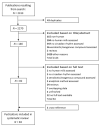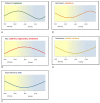Circadian Variation in Human Milk Composition, a Systematic Review
- PMID: 32759654
- PMCID: PMC7468880
- DOI: 10.3390/nu12082328
Circadian Variation in Human Milk Composition, a Systematic Review
Abstract
Background: Breastfeeding is considered the most optimal mode of feeding for neonates and mothers. Human milk changes over the course of lactation in order to perfectly suit the infant's nutritional and immunological needs. Its composition also varies throughout the day. Circadian fluctuations in some bioactive components are suggested to transfer chronobiological information from mother to child to assist the development of the biological clock. This review aims to give a complete overview of studies examining human milk components found to exhibit circadian variation in their concentration.
Methods: We included studies assessing the concentration of a specific human milk component more than once in 24 h. Study characteristics, including gestational age, lactational stage, sampling strategy, analytical method, and outcome were extracted. Methodological quality was graded using a modified Newcastle-Ottawa Scale (NOS).
Results: A total of 83 reports assessing the circadian variation in the concentration of 71 human milk components were included. Heterogeneity among studies was high. The methodological quality varied widely. Significant circadian variation is found in tryptophan, fats, triacylglycerol, cholesterol, iron, melatonin, cortisol, and cortisone. This may play a role in the child's growth and development in terms of the biological clock.
Keywords: biorhythms; breast milk; chrono-nutrition; circadian clock; diurnal variations; lactation.
Conflict of interest statement
The authors declare no conflict of interest. The funders had no role in the design of the study, in the collection, analyses, or interpretation of data, in the writing of the manuscript, or in the decision to publish the results.
Figures


References
-
- World Health Organization. UNICEF . Global Strategy for Infant and Young Child. Feeding. WHO; Geneva, Switzerland: 2003.
Publication types
MeSH terms
LinkOut - more resources
Full Text Sources
Medical

